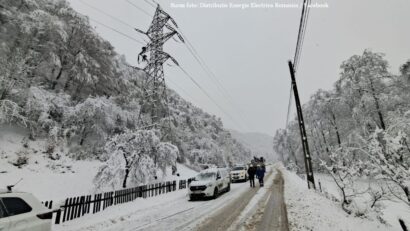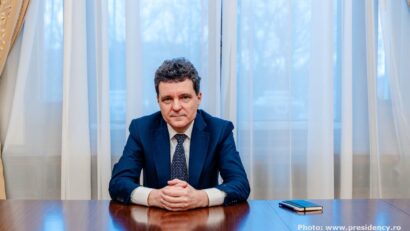Romania has higher inflation rate
Inflation is again on the rise in Romania where the trade deficit is also growing

Bogdan Matei, 14.03.2023, 14:00
In November 2022, Romania’s inflation rate stood at
16.8% exceeding the forecast announced by the Central Bank governor, Mugur
Isarescu, of 16.3%. That has been the highest inflation rate in the past two
decades. In 2002, Romania reported an annual inflation rate of 22.5% and from
2005 until last year the country had only single-digit inflation rates.
This alarming pace seemed to be
slightly going down at the beginning of the year, but went up again last month
as compared to January from 15.07 to 15.52% against the latest price hikes in food
products and services. Figures released on Monday by the National Institute for
Statistics prove that the prices of these products and services saw the highest
increase in the first months of the year, but experts say this shouldn’t alter
the forecast by the Central Bank (BNR) according to which the inflation rate will
again return to single digits towards the end of the year.
Food prices saw the most significant
increase in February by roughly 3.4%, while services rose by 2.5%. At the same
time, prices in non-food products slightly dropped by 0.5% on an average.
Significant price hikes were registered last month in
the category of fresh and canned vegetables, up by 6.35% followed by the fresh
fruits with roughly 4.9% and services for making and mending clothes and
footwear over 3.5%.
Prices in fresh fish, cheese, personal hygiene and
care products as well as other non-food products have grown between 2% and 3%.
Prices in air transport services went down by more
than 12%, whereas prices for cooking oil, electricity and heat by 1% on an
average. According to the latest forecasts, prices were supposed to continue
their downward trend, but experts said this process isn’t a linear one. The
same tendency has been noticed in other EU countries as well where the
inflation rate in February proved to be higher than a month before.
According to experts, this process of keeping
inflation at bay is likely to continue but will have its monthly ups and downs.
In a Radio Romania interview, the financial expert and Central Bank advisor,
Adrian Vasilescu, has confirmed this theory.
In the meantime, the INS data show that Romania’s
trade deficit in January stood at 2.338 billion euros, 203.6 million higher
than in January 2022. The rise was partly caused by the growing inflation,
which raised the imports value, but the main cause is the fact that the
domestic output cannot cover the demand, not even in sectors with tradition,
such as the agro-food industry, the chemical or the car-making sectors. Experts
say that the authorities should step in and take action in order to prevent the
situation from worsening.
(bill)






























